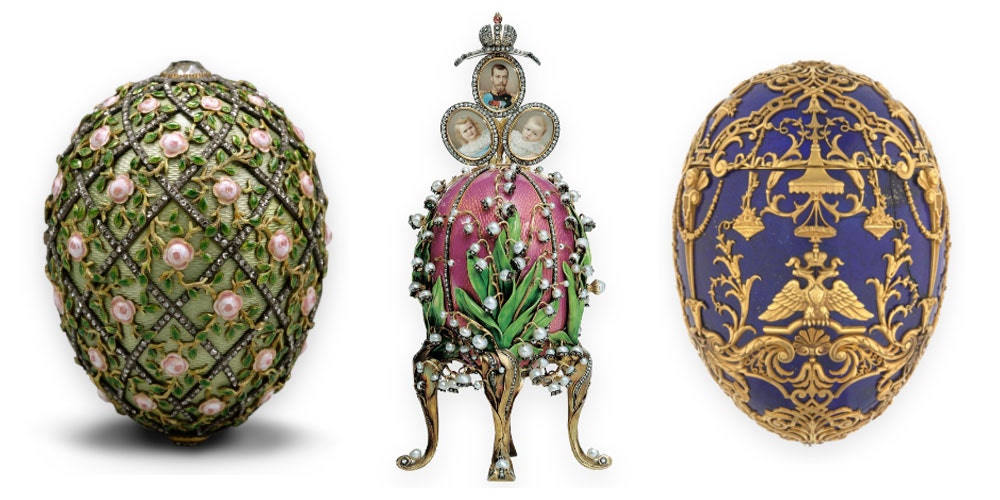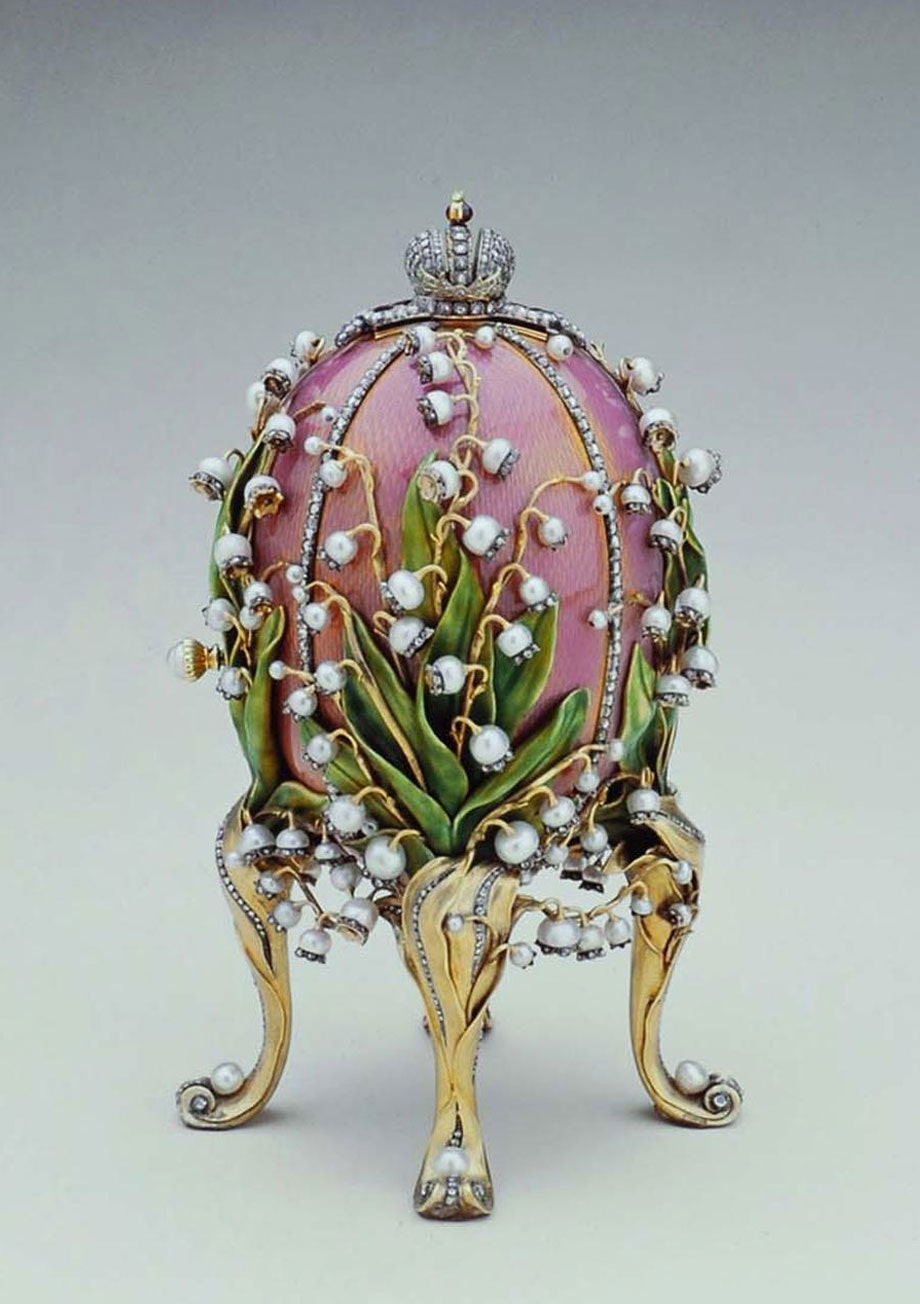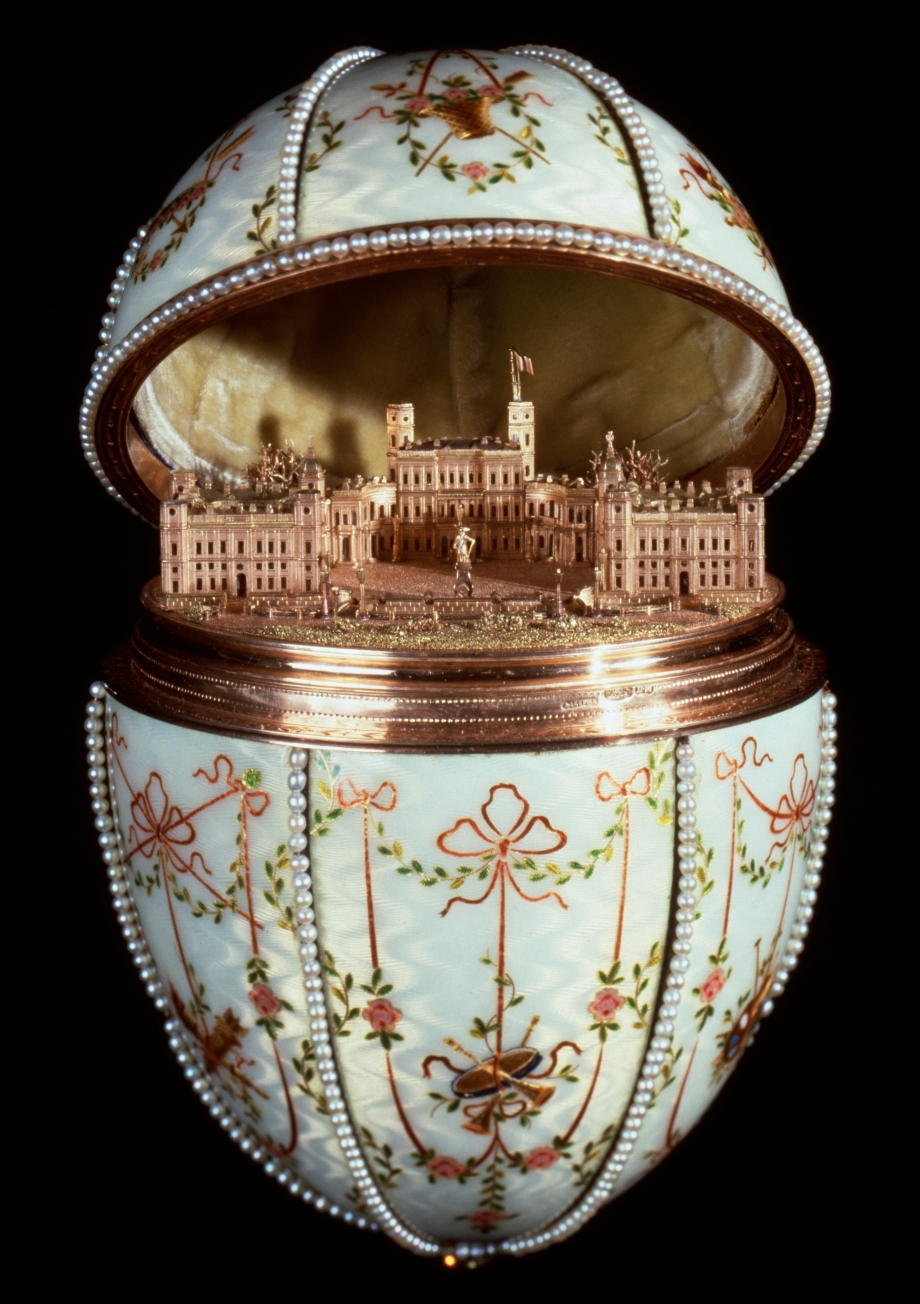Describe Faberge Eggs and Where They Originated.
They were Easter gifts for their wives and mothers and are called the Imperial Fabergé eggs. The thickness of these large eggs makes the carving possible.

The History Of Faberge Eggs The Astley Clarke Jewellery Blog
No one knows where it came from.

. Pysanky Eggs are decorated in the wax resist batik style. DIY Faberge Eggs. 53 rows A Fabergé egg is a jewelled egg created by the jewellery firm House of Fabergé in Saint Petersburg Russian Empire.
The Lilies of the Valley Egg had three diamond encrusted portraits of members of the Czars family painted on porcelain that rose out of the egg when one of the pearls was turnedThe Trans-Siberian Railway Egg contained a working model 6 cars including the locomotive of a railroad train in platinum and gold set with diamonds and rubies. They come they drown me in fabric and jewels and they leave without a word. When May and I dreamed of husbands when we were five neither of us imagined rising to the height of Grandmama.
His fathers death the coronation my conversion our wedding. By arbpen April 9 2020 - 1200 April 9 2020 Crafts Easter. Virtually all were manufactured under the supervision of Peter Carl Fabergé between 1885 and 1917.
Youve probably heard of Fabergé eggsopulent egg-shaped ornaments decked with gemstones and precious metalsbut did you know about their history with Imperial Russia. They come they drown me in fabric and jewels and they leave without a word. Answer 1 of 7.
There is also a display of fakes or Fauxbergé to use the word Géza has coined to describe the Fabergé look-alikes or forged faux objects that have been found on the Wests art market since the. There are five Fabergé Imperial Easter Eggs. Created in the greatest of secrecy each Faberge egg was lovingly crafted for up to a year to ensure the perfect placement of every gem precious metal and secret within.
Get exclusive recipes before they are published. No other Royal Family commissioned these remarkable eggs. New recipes come out on Fridays and will be in your inbox at 2 pm plenty of time to get ingredients and make it at home.
They were made for the Russian Imperial family in the late 1800s all the way through 1915 I believe. The small intricately decorated objets dart -- which Russias royal House of Romanov. A Fabergé egg is one of the jewelled eggs made by Peter Carl Fabergé and his company between 1885 and 1917.
The story of the Faberge Eggs annually created for the last Russian czars mother and wife fascinates all of us especially when considered in the context of the tragedy that later befell the family. No other goldsmith or jeweler could match the lavish. Faberge is one of the most iconic brands ever to come out of Russia and most known for its famous egg-shaped treasures.
Possibly as many as 69 were created of which 57 survive today. I do not even know my handmaidens. I live in a gilded cage.
Make your own eggs you can keep for years and years. The first Faberge egg or imperial egg was requested by. For over a century the name Faberge has evoked wealth opulence and the worlds most extravagant Easter eggs.
Mitgliedd1 and 4 more users found this answer helpful. Everything is gold and delicate and I have become the same. The most famous are those made for the Russian Tsars Alexander III and Nicholas II.
The data collected including the number visitors the source where they have come from and the pages visted in an anonymous form. It was smuggled to London in 1996 after being discovered by a dealer in St Petersburg. Faberge Eggs Coronation Egg 1897 Empress of Russia I never expected this.
Of the 50 that were made and delivered 42 have survived and only 13 of these are in the US. No one outside a small group of self-interested promoters believes the Egg is empirically imperial. Lilies of the Valley.
Well-versed in the history of art Peter Carl Fabergé based this first egg it is believed on the 18th-century Saxon Royal Egg which he had seen in the Green Vault museum in Dresdena gold egg that encased a gold hen a gold crown and a ring. We keep items that we believe will remain special to us in the future. The most famous are his 52 Imperial eggs 46 of which survive made for the.
Lily of the Valley. These cultures use dyes wax scraping and appliques to create beautiful works of art. In this History of the Holidays video learn the origin of one of Easters most elegant decorations the Faberge egg.
Fabergé egg any of a series of decorative eggs containing objets dart that were made by Peter Carl Fabergés studios from 1885 to 1917. These highly collectible objects were manufactured under the supervision. Although wax resist techniques are used.
Eastern Europeans mainly Slavs have a rich history of decorating chicken duck and goose eggs. According to Fabergé Proler Skurlov in Fabergé Imperial Easter Eggs London 1997 the egg was designed by Gustav Shkilter a relative of Carl Fabergés and made by the Putilovskii steel plant which was renowned for its high-quality steel. We treasure these items and sometimes build collections of.
I live in a gilded cage. This is a pattern type cookie set by Google Analytics where the pattern element on the name contains the unique identity number of the account or website it relates to. I feel as though I have blinked and the year has ended and I have a whole new life.
The House of Fabergé made about 52 imperial eggs of which 46 have survived. The best-knownas well as the most lavish and intricatewere the 50 Imperial eggs created for the Romanov family and given as Easter gifts. While Faberge manufactured many Easter Eggs in ordinary conversations when people speak of Faberge Easter Eggs they are referring exclusively to a set of eggs made for the Russian Imperial Family.

The History Of Faberge Eggs The Astley Clarke Jewellery Blog

The History Of Faberge Eggs The Astley Clarke Jewellery Blog
No comments for "Describe Faberge Eggs and Where They Originated."
Post a Comment